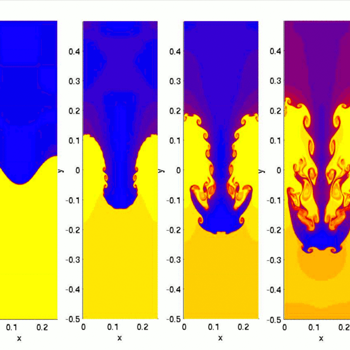What major concepts should I know for organic chemistry?
2 Answers
Acids and bases: what they are, the different types, and how to tell strong from weak.
Knowing the period table trends is really useful. (Electronegativity, radii trends)
Atomic orbitals and the shapes
Most everything else will be brand new concepts and build on itself, so don't worry too much.
Good luck!
Most organic chemistry concepts can be explained by referring back to electronegativity, resonance, pKa, steric hindrance, and orbital-interaction arguments, so you should at least remember what those are before going in if you want to get ahead. :)
Here's an overview of some things about them.
ELECTRONEGATIVITY
Some of the things that you can go back to electronegativities to explain are:
- A more electronegative atom pulls electrons more towards it than another less electronegative atom, polarizing it, so a functional group like a carbonyl (
#"C"="O"# ) will tend to be electropositive at that particular carbon. This will help you decide what is a nucleophile and what is an electrophile.This is extremely important, and you'll see this all the time.
- Electronegative atoms like bromine and chlorine are sometimes said to inductively withdraw electrons, which polarizes certain bonds, except it can be from several bonds away. (This will also explain why Nuclear Magnetic Resonance (NMR) chemical shifts are more "downfield" when a more electronegative atom is attached.)
RESONANCE
A lot of things can be explained by resonance. A few are:
- Strength or stability of conjugate acids/bases
- Determination of where the electrophilic site tends to be
- The major condition for aromaticity (classification of compounds whose standard model is benzene)
- The tendency of conjugated systems to promote the likelihood of specific carbocation intermediates when a double bond is one carbon away, or when a benzene ring is right next to an electropositive carbon
- Proof of a
#beta# -keto acid's capacity for, and an#alpha# -keto acid's inability for, decarboxylation (late in O-Chem II; kinda obscure.)
pKa
Memorizing pKas is not necessary, but it's really helpful to know at least a few so that you can determine things like:
- what makes a good leaving group during a substitution reaction (
#"S"_N1# or#"S"_N2# )- strengths of acids and bases
Some common pKas:
- Water
#~~ 15.7# - Ethanol
#~~ 15.9# - Ammonium
#~~ 9.4# - Hydronium
#~~ -2.4# - Alkane
#= 50~60# - Alkene
#= 43~44# - Alkyne
#~~ 25#
STERIC HINDRANCE
The basic idea is just that big things create clutter. Get an idea of when spatial clutter can make certain groups of atoms want to face a different way to make the molecule more stable as a whole. This can help in situations like:
- Cyclohexane chair conformations
- Likelihood of substitution reaction NOT occurring due to steric blockage/hindrance
ORBITAL INTERACTIONS
This is something I wish I had known back then, but it's not too bad if you pay attention and practice drawing it. Basically, the interaction of certain orbitals helps stabilize certain compounds. Some examples:
- Hyperconjugation stabilizes a tertiary carbocation more than a primary carbocation
- A
#pi# bond is weaker than a#sigma# bond because the parallel orbital overlap is weaker than the colinear orbital overlap.- An
#sp^2# carbon is made up of one#s# and two#p# atomic orbitals, thus giving about#33%# #s# character and#66%# #p# character. Since an#s# orbital is closer to the nucleus than the#p# orbital, and an#sp^2# carbon has more#s# character than an#sp^3# carbon, that's why a#"C"="C"# bond tends to be shorter than an#"C"-"C"# bond.


